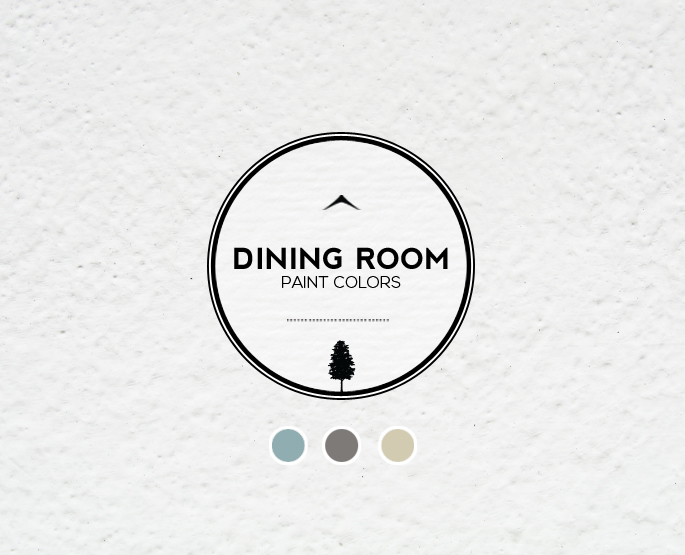
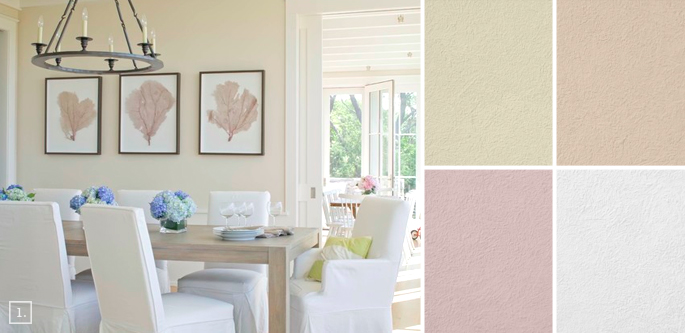
Wall Color: Benjamin Moore Chantilly Lace OC-65
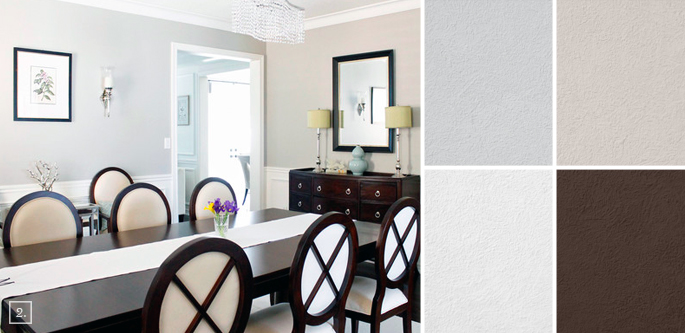
Wall Color: Benjamin Moore Revere Pewter HC-172
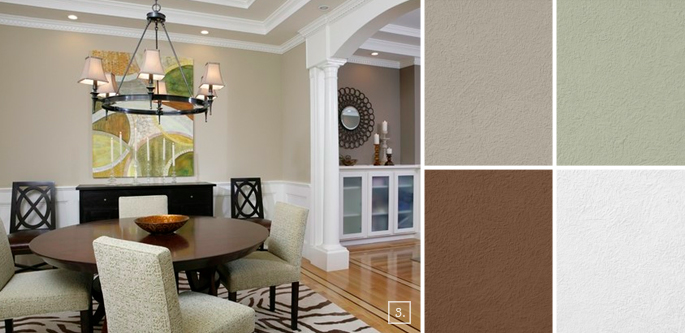
Wall Color: Benjamin Moore Bleeker Beige HC-80
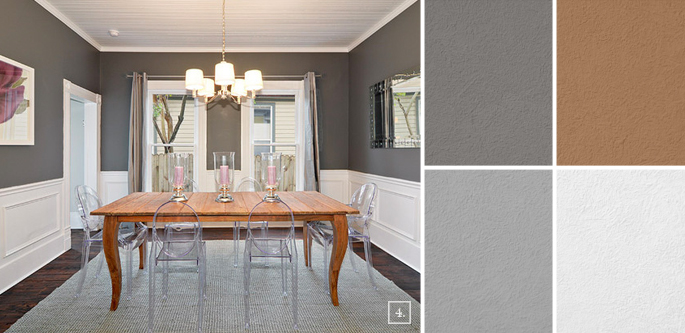
Wall Color: Benjamin Moore Kendall Charcoal HC-166
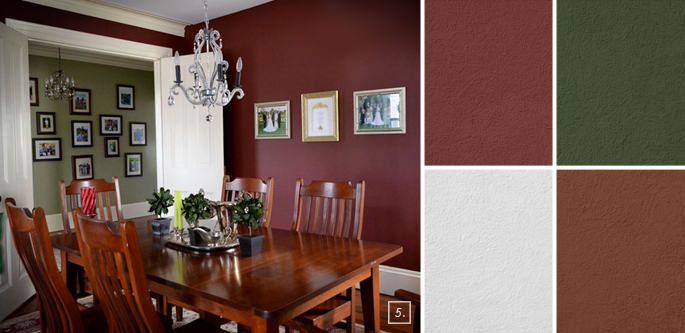
Similar Wall Color: Benjamin Moore Tea 2091-10

Wall Color: Benjamin Moore Terrapin Green 2145-20
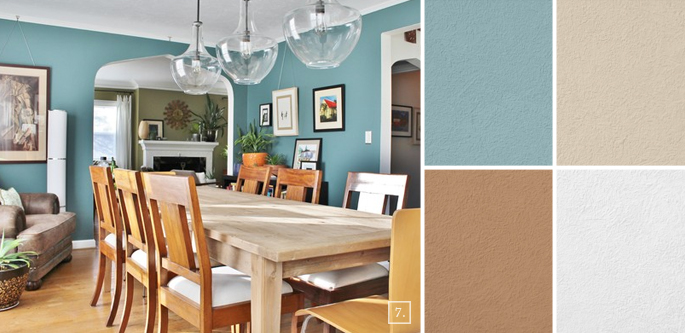
Wall Color: Benjamin Moore Caribbean Teal 2123-20
Creating a Living Room Color Palette
You can see from the pictures above that the color palette of the rooms are made up of more than just the color on the walls. You’ve got the floor, the ceiling even, the main furniture pieces, curtains – and the walls. What this means is that you’ll need to look at your whole room (floors, ceiling, furniture pieces, etc.) and coordinate all the dining room colors to create a well designed space.
3 Ways to Create a Color Scheme in a Room
I see 3 ways to go about co-ordinating the colors in a dining room:
- Paint all the wall in a neutral color like white, off white, cream or light grey. This creates a blank canvas for you to decorate the dining room with colorful decor pieces.
- Paint all of the walls in the color of your choice. One thing to remember when doing this is that your color choice will determine how the room feels. Light colors will make a dining room feel large, spacious, and bright. Dark colors will make the dining room feel smaller and more intimate.
- If you feel painting all the walls in a color might be a bit overwhelming, then you can opt for a feature wall – just like the dining room in picture (A) below. A feature wall is one wall that you paint in a color (such as red, blue or black). You then paint all the other walls in a neurtal color (white, cream, light grey). The one wall with color stands out, and becomes a focal point in the room. It also adds color to the space, but in a subtle way.
Popular Dining Room Paint Colors
Neutral shades such as off white, light and dark grey, and cream are popular modern dining room paint ideas. Other popular wall colors include light yellow and light olive.
Test and Experiment
You will want to go out and get paint samples and take them home. This is the best way to get a clear idea of what your space will look like. It is hard to trust pictures, because the rooms can easily look different in real life (different computer screens show different colors, the camera settings can make the space look different in the picture, etc.). Also the lighting your dining room, or the texture of your walls can play a role in how the paint color will turn out. You’ve also got major furniture pieces, the floor, even the ceiling that you want to consider when choosing the paint color for your walls.
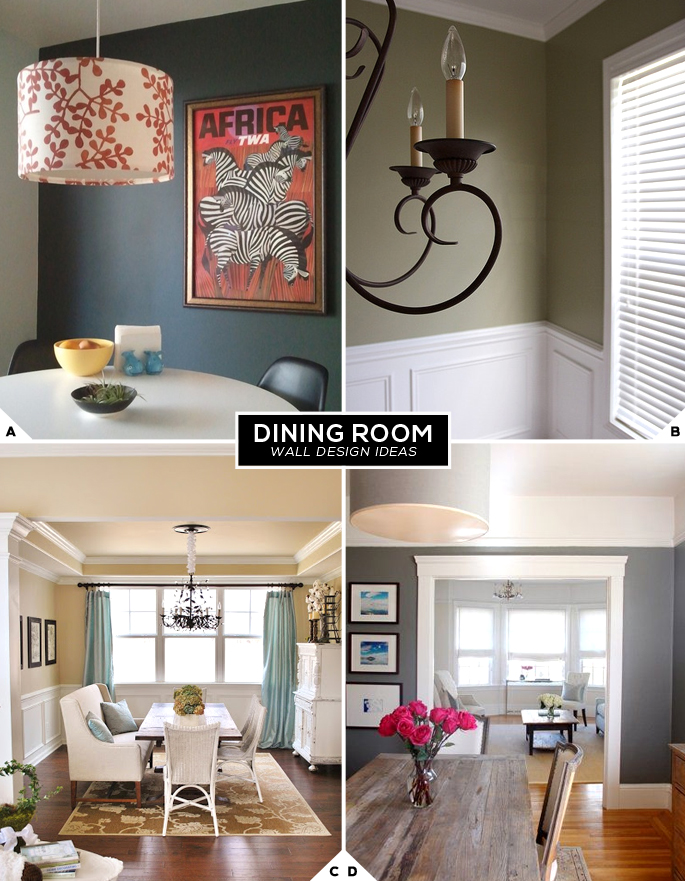
Breaking Up The Look of Solid Flat Walls
If having a flat solid painted wall seems a bit dull or you have a large dining room, you can add some design elements to break up the design of the wall. One idea is to use wainscoting. By adding wooden panels you add depth to the walls and wainscoting also divides the walls into different sections and colors – seen in picture (B). Wall trim is another way to add some decoration and depth to the walls.
Other ideas include hanging up floating shelves, artwork, or planters.
Finishing Touches
Once you’ve painted your dining room walls, you might like to add a few extra design touches such as:
- Crown molding (C)
- Base molding
- Framing any entryways – just like in picture (D)
More dining room mood board posts:
- A Design Guide for Dining Room Lighting Ideas
- Design Tips: Small Dining Room Ideas
- Stylish Living: Modern Dining Room Ideas and Designs
- Search all of my dining room posts for more ideas


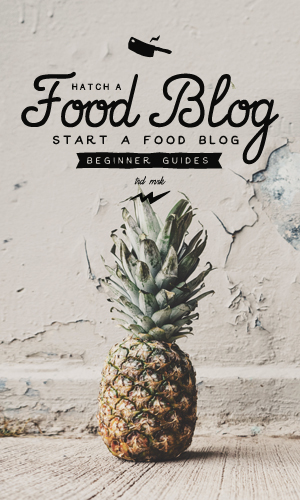
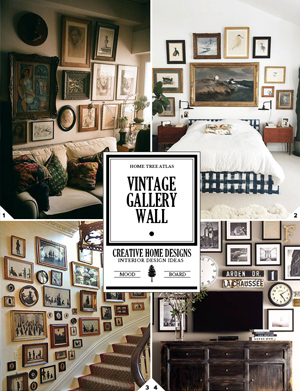
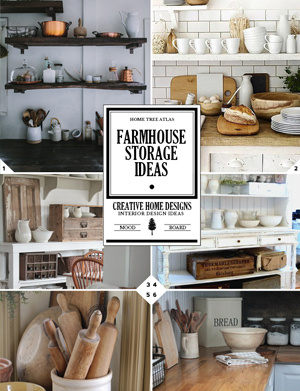
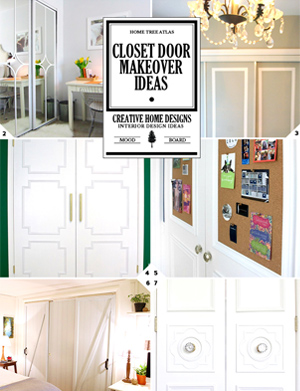

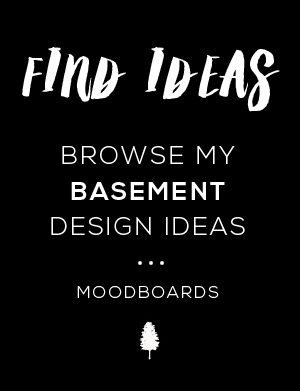
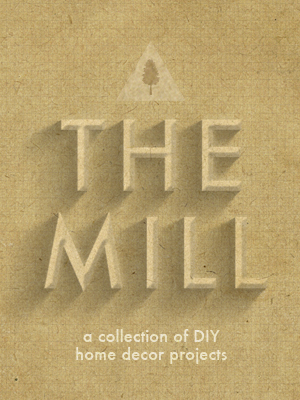
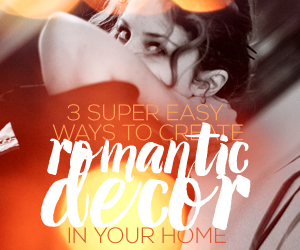

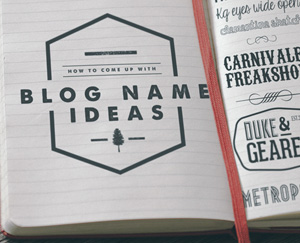









Comments are closed.